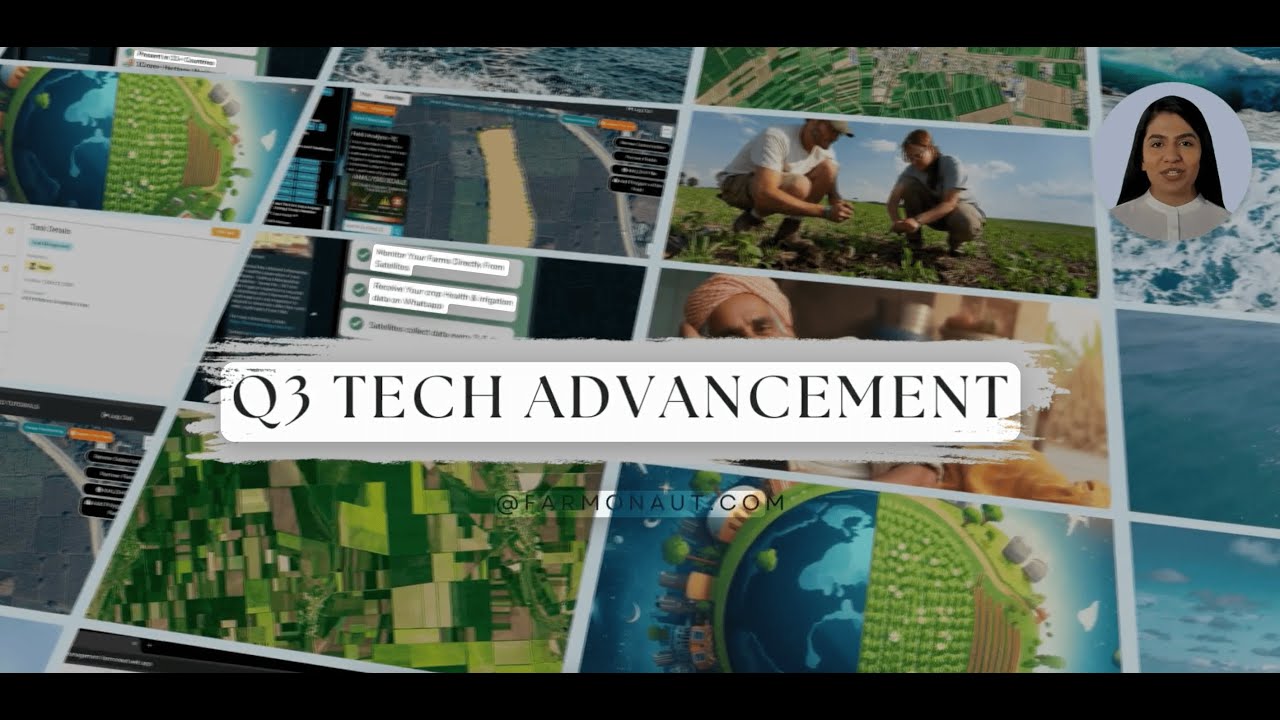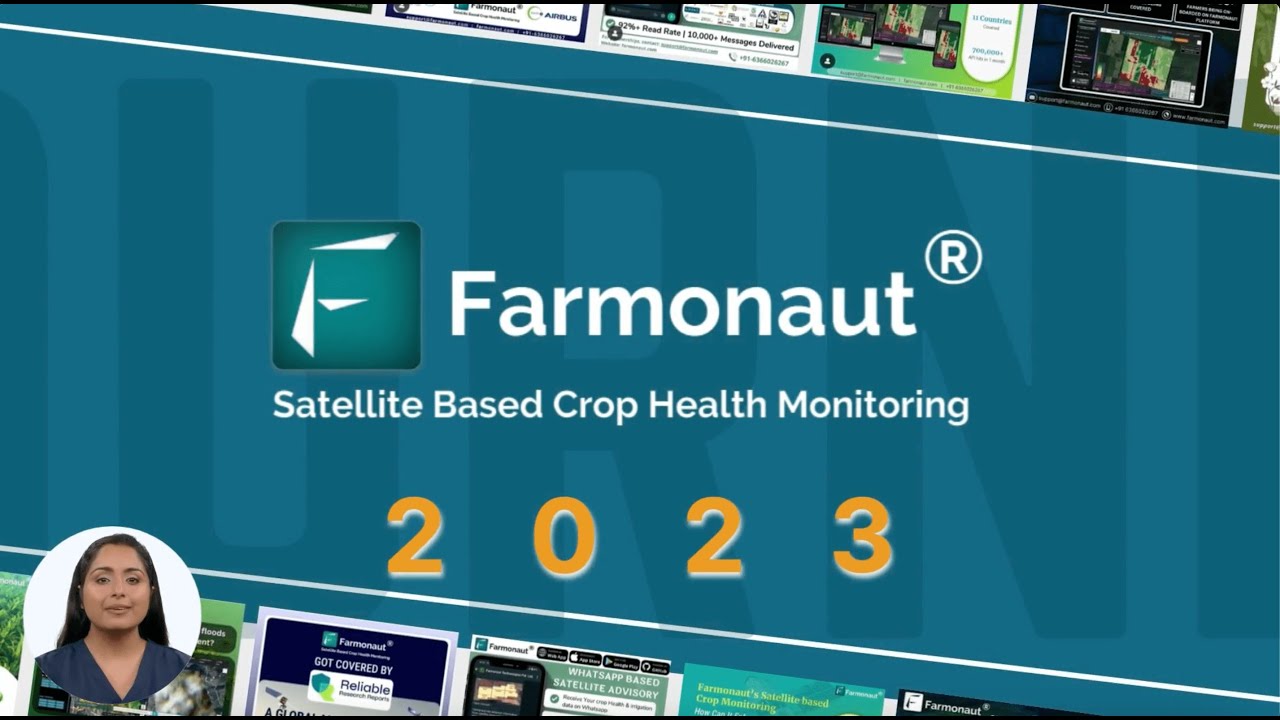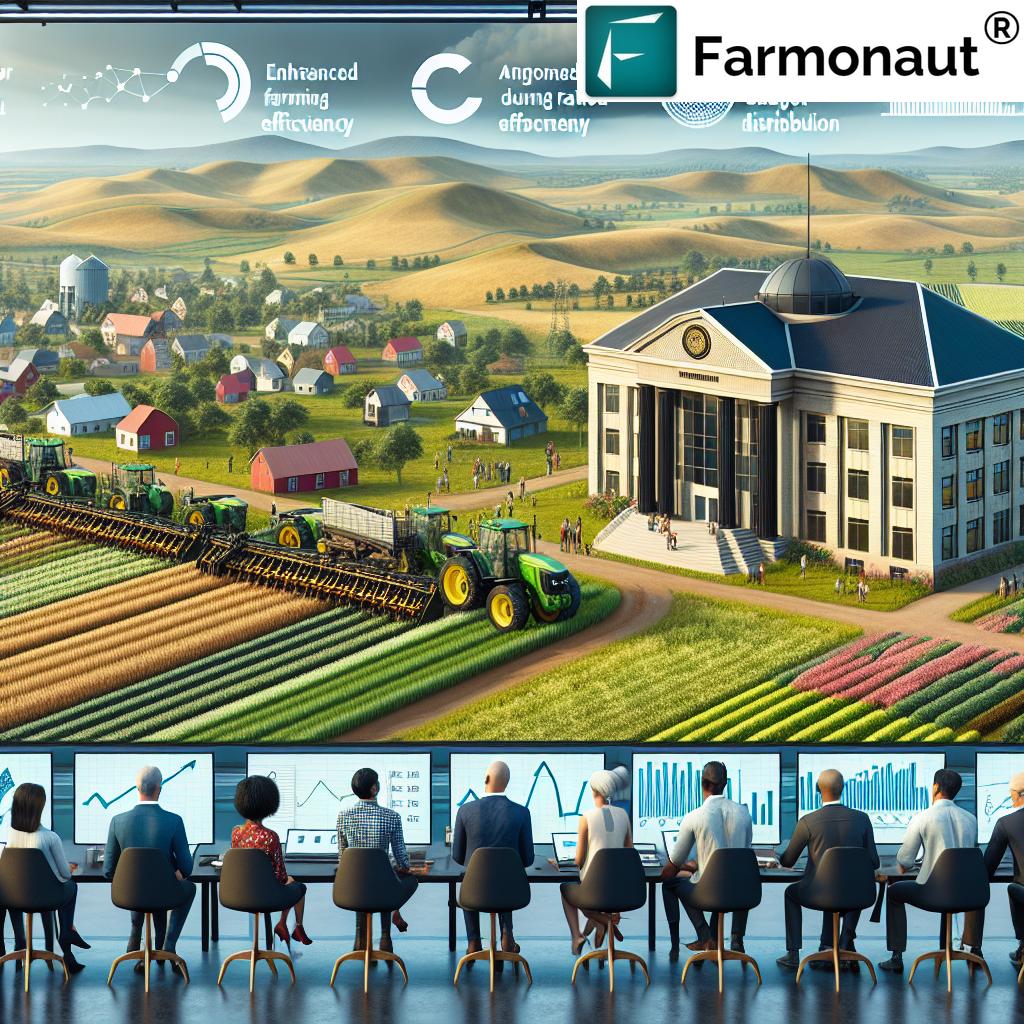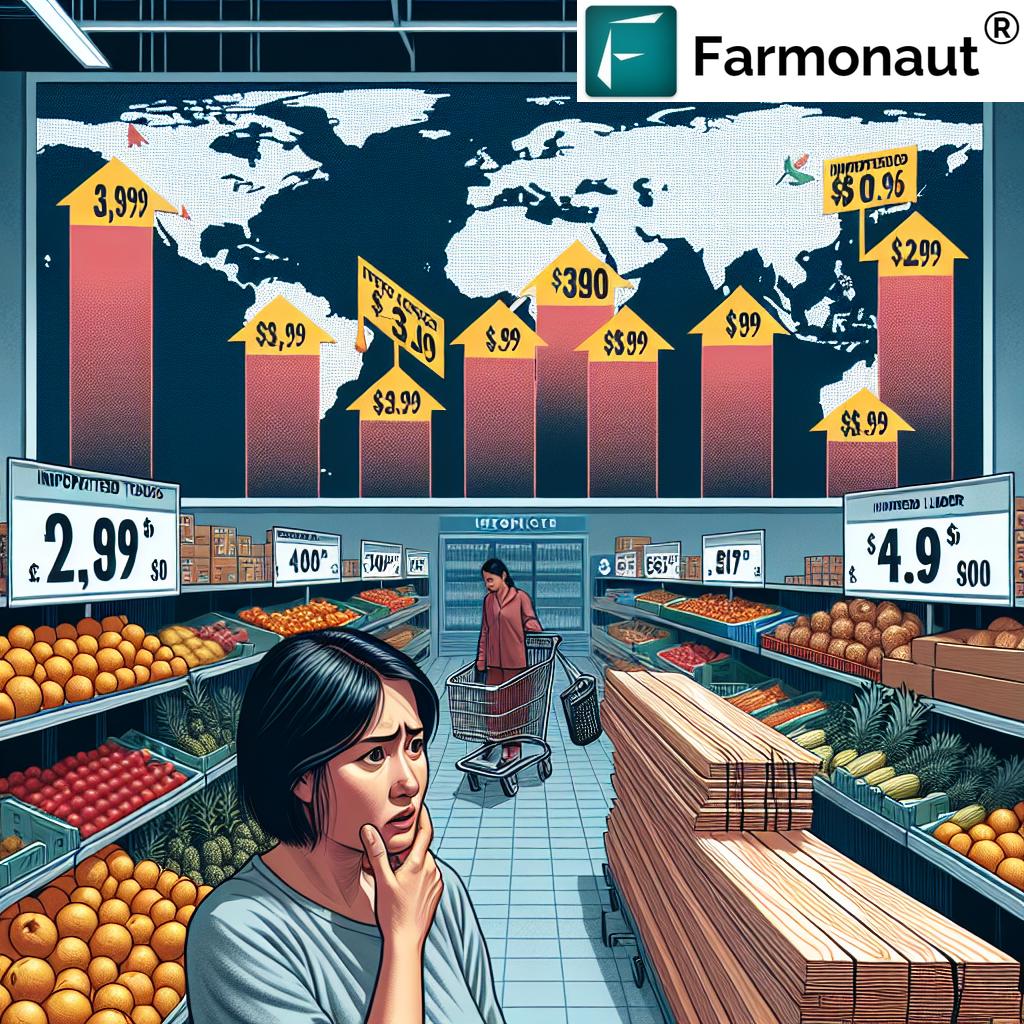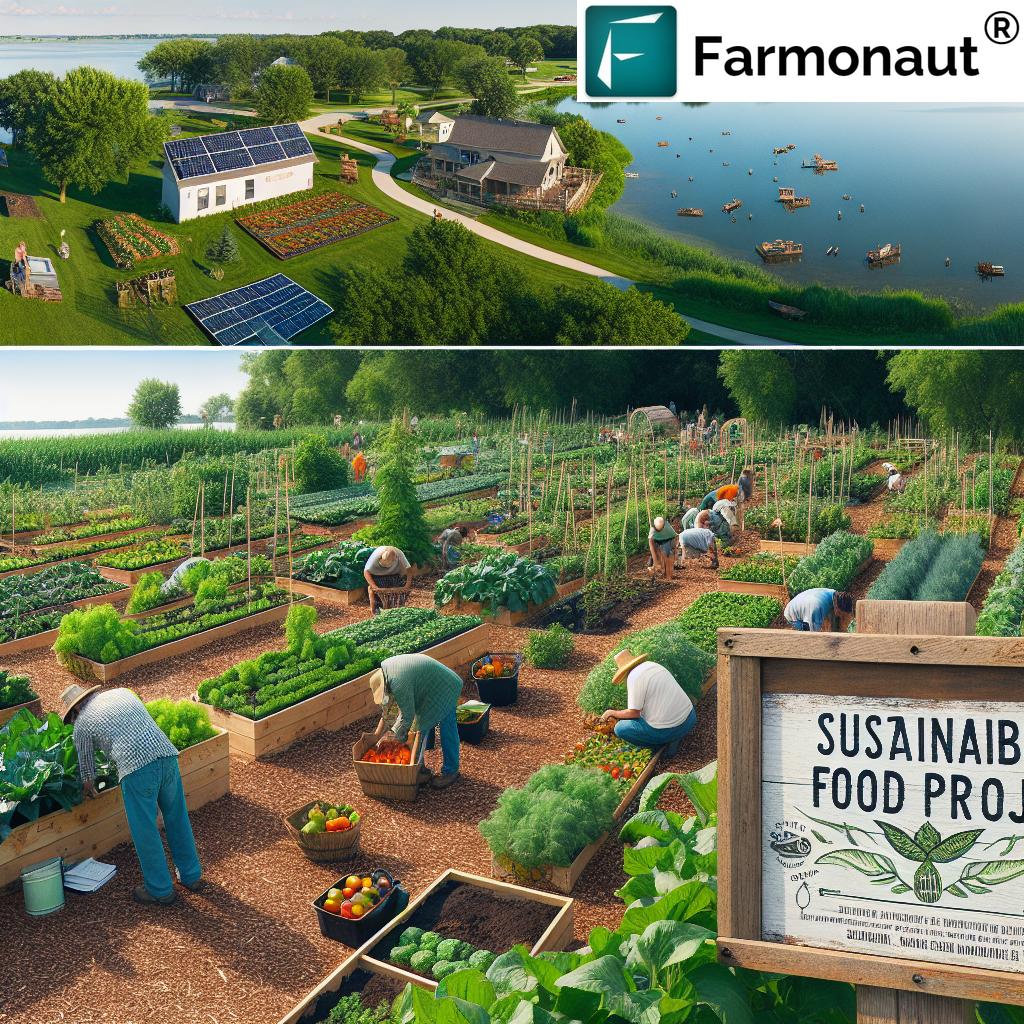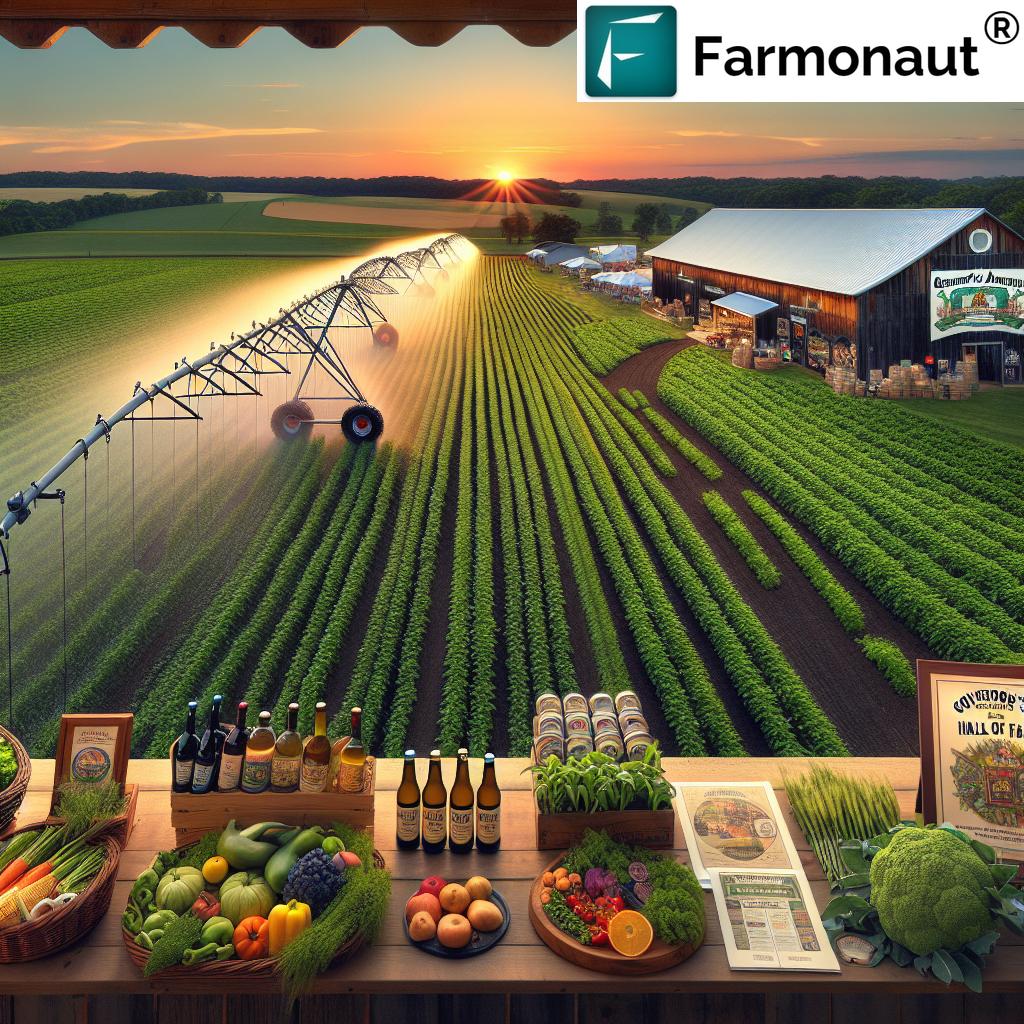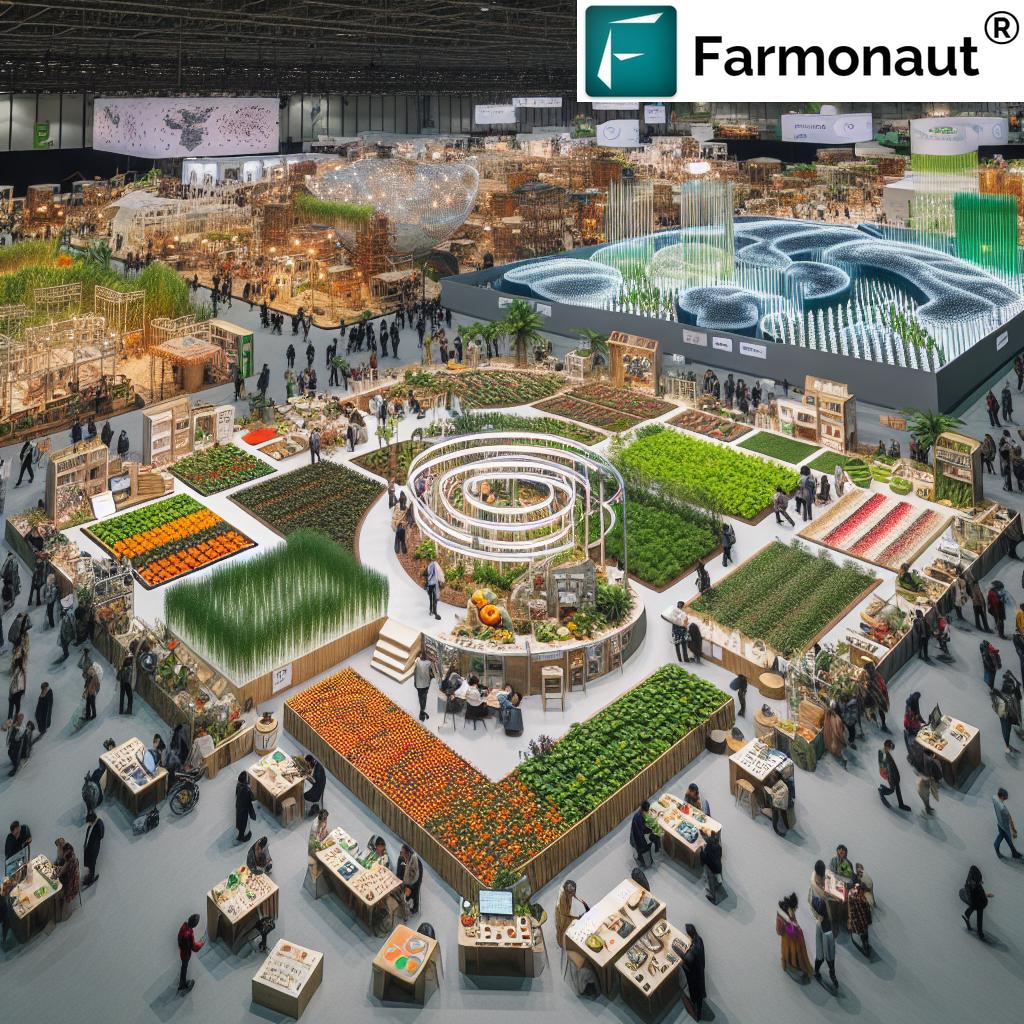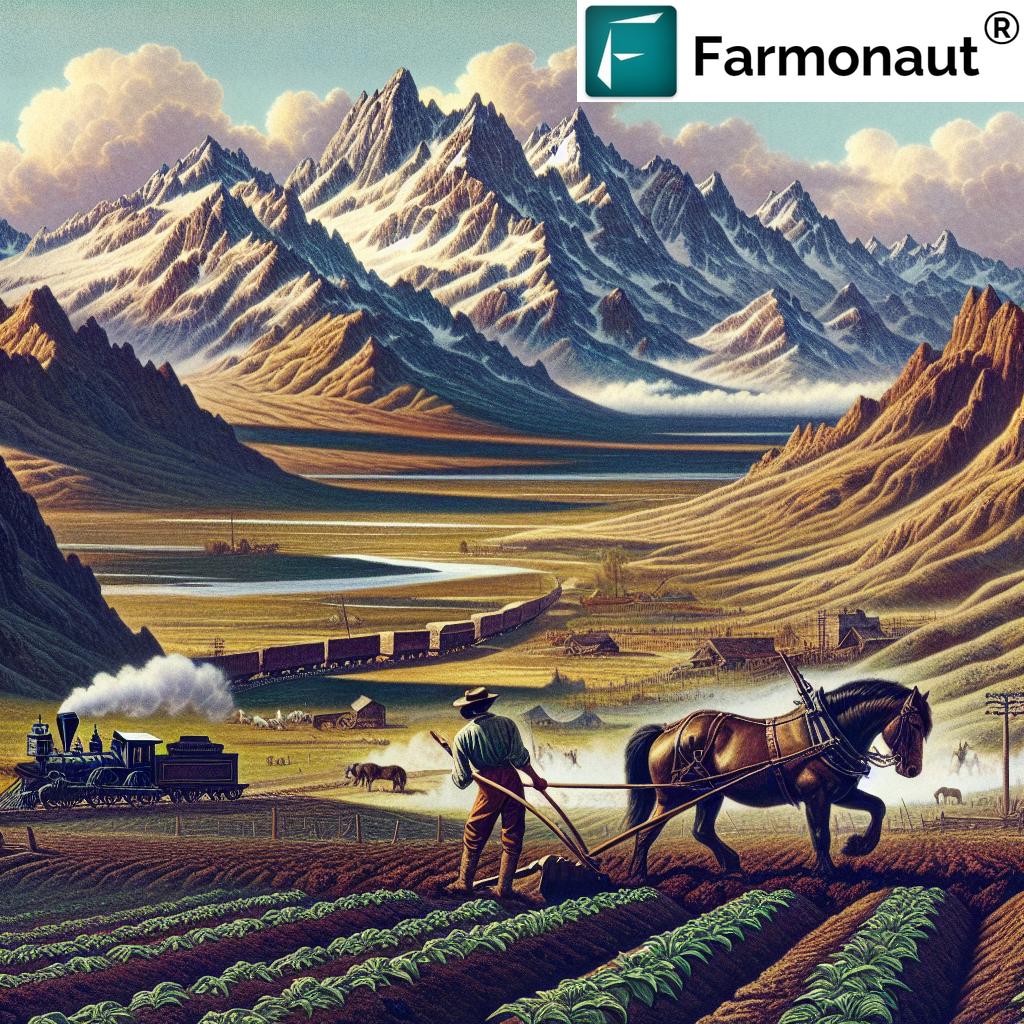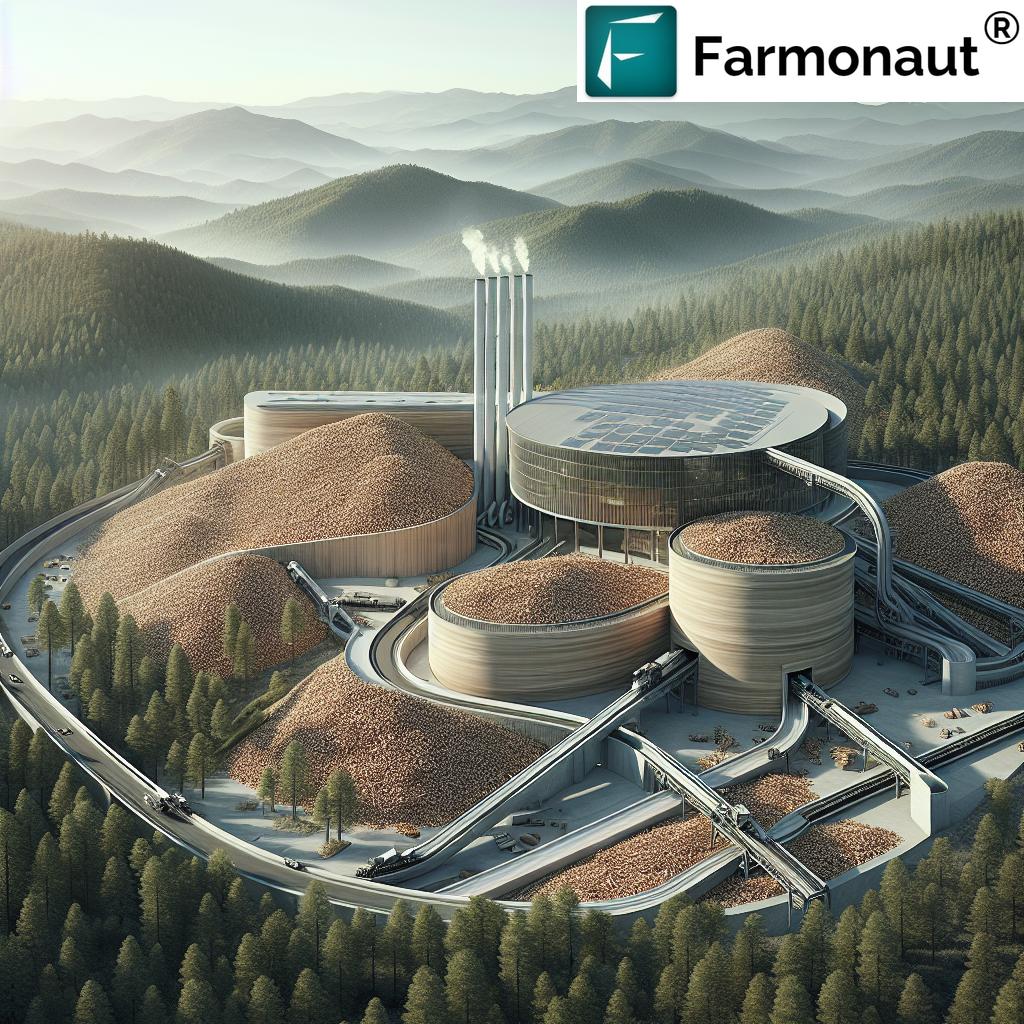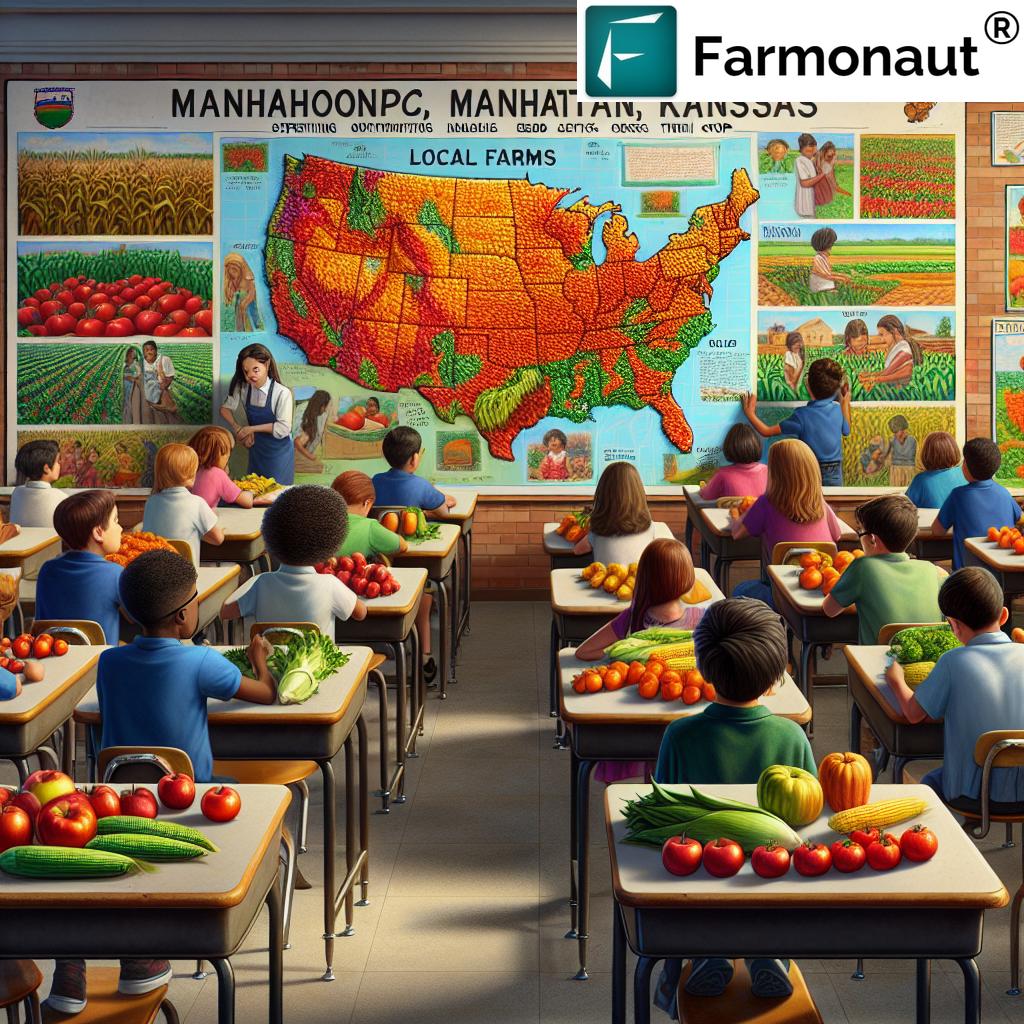Revolutionizing North American Agriculture: How Farmonaut’s GIS-Powered Indoor Farming Technology is Shaping Sustainable Food Production
“Indoor farming techniques using Farmonaut’s technology can reduce land and water usage by 90% compared to traditional agriculture methods.”
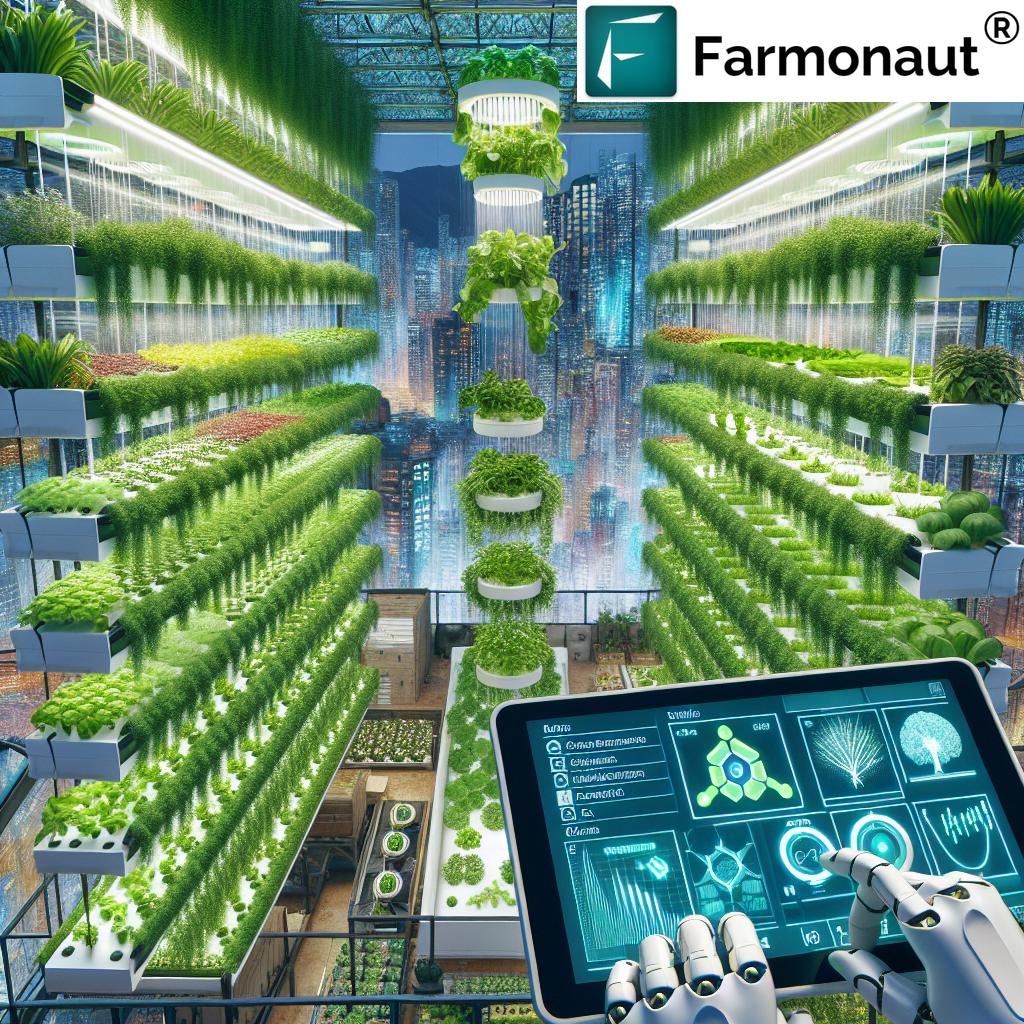
In the rapidly evolving landscape of North American agriculture, we are witnessing a remarkable transformation driven by innovative indoor farming technologies. At the forefront of this revolution is Farmonaut, a pioneering agricultural technology company that is reshaping the way we approach sustainable food production. Our cutting-edge GIS-powered solutions are not only optimizing crop yields but also addressing some of the most pressing challenges facing modern agriculture.
As we delve into the world of controlled environment agriculture (CEA), we’ll explore how Farmonaut’s advanced greenhouse systems and precision agriculture technology are setting new standards for efficiency, sustainability, and food security across the continent. From the bustling urban centers to remote rural communities, our innovative crop growing techniques are ensuring access to fresh, nutritious produce while dramatically reducing the environmental footprint of food production.
The Rise of Indoor Agriculture Technology
The agricultural sector is undergoing a paradigm shift, with indoor farming emerging as a game-changing solution to many of the challenges faced by traditional farming methods. Farmonaut’s GIS-powered indoor farming technology is at the heart of this transformation, offering a suite of tools that enable farmers to cultivate crops with unprecedented precision and efficiency.
- Satellite-Based Crop Health Monitoring: Our platform utilizes multispectral satellite imagery to provide real-time insights into vegetation health, soil moisture levels, and other critical metrics.
- AI-Driven Advisory Systems: The Jeevn AI system delivers personalized farm management strategies, weather forecasts, and expert advice to optimize crop production.
- Blockchain-Based Traceability: We ensure transparency and security throughout the supply chain, from farm to consumer, enhancing trust and reducing fraud.
By integrating these advanced technologies, we’re enabling farmers to make data-driven decisions that significantly improve crop yields while minimizing resource usage. This approach is particularly crucial in regions where land and water scarcity pose significant challenges to traditional agriculture.
Sustainable Farming Methods: A New Paradigm
At Farmonaut, we’re committed to developing sustainable farming methods that not only increase productivity but also protect our planet’s resources for future generations. Our controlled environment agriculture solutions are designed to achieve maximum efficiency with minimal environmental impact.
- Water-Efficient Agriculture: Our systems use up to 90% less water compared to traditional farming methods, employing advanced irrigation techniques and water recirculation systems.
- Land Conservation: By utilizing vertical farming solutions and optimizing space usage, we’re able to produce more food on significantly less land.
- Reduced Carbon Footprint: Our indoor farming facilities are powered by renewable energy sources and employ energy-efficient lighting and climate control systems.
These sustainable methods are not just beneficial for the environment; they also result in higher quality produce that’s free from pesticides and grown in optimal conditions year-round.
Controlled Environment Agriculture: Precision and Predictability
Controlled environment agriculture is at the core of Farmonaut’s approach to revolutionizing food production. By creating optimal growing conditions, we’re able to achieve consistency and predictability in crop yields that are simply not possible with traditional outdoor farming.
- Climate Control: Our advanced greenhouse systems maintain ideal temperature, humidity, and CO2 levels for each crop variety.
- LED Lighting: Customized lighting spectrums optimize photosynthesis and plant growth cycles.
- Automated Nutrient Delivery: Precision fertigation systems ensure plants receive the exact nutrients they need at the right time.
This level of control not only leads to higher yields but also allows for year-round production of crops that would typically be seasonal or impossible to grow in certain climates.
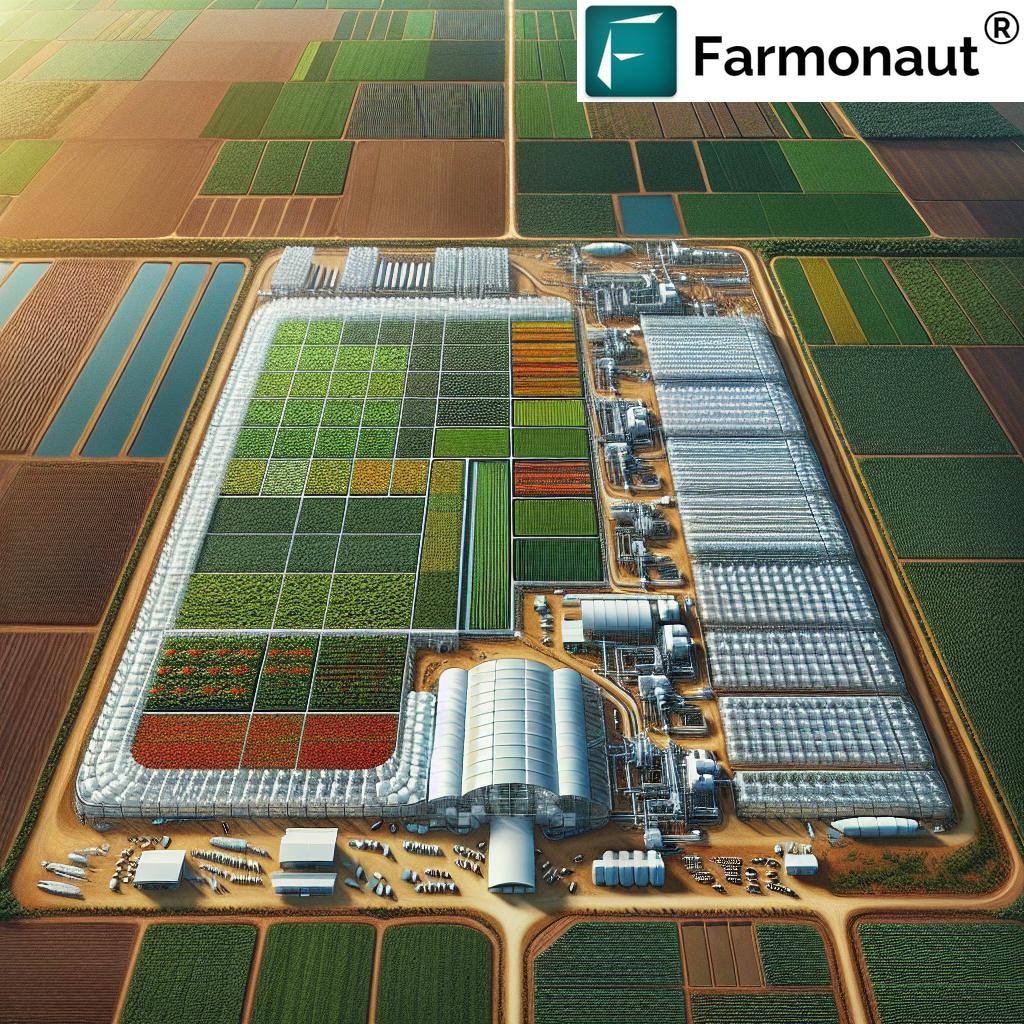
Innovative Crop Growing Techniques
Farmonaut’s innovative crop growing techniques are pushing the boundaries of what’s possible in agriculture. We’re constantly researching and developing new methods to enhance crop quality, increase yields, and reduce resource consumption.
- Hydroponic Systems: Soil-less growing techniques that maximize nutrient uptake and accelerate plant growth.
- Aeroponics: Mist-based systems that provide roots with optimal oxygen and nutrient exposure.
- Aquaponics: Integrated systems that combine fish farming with plant cultivation, creating a symbiotic ecosystem.
These techniques not only result in faster growth rates and higher yields but also allow for the cultivation of a wider variety of crops in diverse environments.
“Farmonaut’s GIS-powered indoor farming solutions are revolutionizing sustainable food production across North America, optimizing crop yields in controlled environments.”
Vertical Farming Solutions: Maximizing Space Efficiency
In urban environments where space is at a premium, vertical farming solutions offer a way to produce large quantities of food in a small footprint. Farmonaut’s vertical farming systems are designed to maximize productivity per square foot while minimizing resource usage.
- Multi-Layer Growing Systems: Stacked growing beds that increase production capacity exponentially.
- Integrated Lighting and Irrigation: Efficient systems that ensure each layer receives optimal light and water.
- Automated Harvesting: Robotic systems that streamline the harvesting process and reduce labor costs.
These vertical farming solutions are not only space-efficient but also allow for the production of fresh, local produce in urban centers, reducing transportation costs and carbon emissions associated with long-distance food transport.
For developers interested in integrating our technology into their own systems, check out our API and API Developer Docs.
Water-Efficient Agriculture: Conserving Our Most Precious Resource
Water scarcity is a growing concern in many parts of North America, making water-efficient agriculture a critical focus for Farmonaut. Our indoor farming systems are designed to dramatically reduce water usage while maintaining optimal growing conditions.
- Closed-Loop Water Systems: Recirculating systems that capture and reuse water, minimizing waste.
- Precision Irrigation: Smart sensors and AI-driven systems that deliver water only when and where it’s needed.
- Humidity Control: Advanced systems that capture and recycle atmospheric moisture, further reducing water needs.
By implementing these water-efficient practices, we’re not only conserving a vital resource but also demonstrating that high-yield agriculture is possible even in water-stressed regions.
High-Yield Indoor Farming: Boosting Productivity
One of the most significant advantages of Farmonaut’s GIS-powered indoor farming technology is its ability to achieve high yields consistently. By creating optimal growing conditions and leveraging data-driven insights, we’re able to maximize crop productivity in ways that traditional farming simply cannot match.
- Year-Round Production: Climate-controlled environments enable continuous cultivation, regardless of outdoor conditions.
- Accelerated Growth Cycles: Optimized conditions lead to faster plant growth and more frequent harvests.
- Reduced Crop Loss: Protection from pests, diseases, and extreme weather events significantly reduces crop failures.
These high-yield techniques not only increase overall food production but also contribute to greater food security and stability in the face of climate change and population growth.
Sustainable Food Production: Nourishing Communities
At Farmonaut, we believe that sustainable food production is not just about environmental conservation; it’s about nourishing communities and ensuring access to fresh, nutritious produce for all. Our indoor farming solutions are designed with this holistic approach in mind.
- Local Food Production: By enabling food production closer to urban centers, we’re reducing food miles and supporting local economies.
- Enhanced Nutritional Value: Controlled growing conditions allow us to optimize the nutritional content of crops.
- Food Safety: Our closed systems reduce the risk of contamination and the need for harmful pesticides.
Through these sustainable food production methods, we’re not only feeding communities but also fostering a deeper connection between people and their food sources.
Advanced Greenhouse Systems: The Future of Farming
Farmonaut’s advanced greenhouse systems represent the pinnacle of controlled environment agriculture. These state-of-the-art facilities combine cutting-edge technology with sustainable practices to create the ideal growing environment for a wide range of crops.
- Smart Climate Control: AI-driven systems that continuously adjust temperature, humidity, and ventilation.
- Energy-Efficient Design: Innovative materials and construction techniques that maximize natural light and insulation.
- Integrated Pest Management: Biological control methods that maintain a healthy ecosystem without chemical pesticides.
These advanced greenhouse systems are not only more productive than traditional greenhouses but also more resilient to external factors such as climate change and extreme weather events.
Precision Agriculture Technology: Data-Driven Farming
At the heart of Farmonaut’s indoor farming revolution is our precision agriculture technology. By leveraging GIS, AI, and IoT devices, we’re able to gather and analyze vast amounts of data to optimize every aspect of crop production.
- Real-Time Monitoring: Sensors that continuously track plant health, growth rates, and environmental conditions.
- Predictive Analytics: AI algorithms that forecast crop yields and identify potential issues before they arise.
- Automated Decision-Making: Smart systems that adjust growing conditions in real-time based on data insights.
This data-driven approach not only improves crop yields and quality but also reduces waste and resource consumption, making indoor farming more sustainable and economically viable.
Comparison: Indoor Farming vs. Traditional Agriculture
| Farming Method | Land Usage (acres/ton) | Water Consumption (gallons/ton) | Crop Yield (tons/acre) | Pesticide Usage (lbs/acre) | Energy Consumption (kWh/ton) | Carbon Footprint (CO2 tons/ton) | Year-round Production | Weather Dependency | Precision Agriculture Integration |
|---|---|---|---|---|---|---|---|---|---|
| Farmonaut’s Indoor Farming | 0.01 | 1,000 | 100 | 0 | 500 | 0.8 | Yes | Low | High |
| Traditional Agriculture | 1 | 10,000 | 10 | 5 | 200 | 2 | No | High | Low |
This comparison clearly illustrates the significant advantages of Farmonaut’s indoor farming technology over traditional agriculture methods. The dramatic reductions in land and water usage, coupled with increased crop yields and year-round production capability, demonstrate the potential of our systems to revolutionize food production in North America and beyond.
The Impact on Local Communities
Farmonaut’s indoor farming solutions are not just transforming agriculture; they’re also having a profound impact on local communities across North America. By bringing food production closer to urban centers, we’re creating new opportunities for employment, education, and community engagement.
- Job Creation: Our facilities require skilled workers in areas such as horticulture, technology, and logistics.
- Educational Partnerships: We collaborate with local schools and universities to provide hands-on learning experiences in advanced agriculture.
- Community Engagement: Our farms often serve as hubs for community events and education about sustainable food production.
Through these initiatives, we’re not only producing food but also cultivating a new generation of agricultural innovators and fostering a deeper connection between communities and their food sources.
The Future of Food Security
As we look to the future, Farmonaut’s GIS-powered indoor farming technology represents a critical component of ensuring food security in the face of growing populations and climate change. Our sustainable, high-yield farming methods offer a resilient solution to many of the challenges facing traditional agriculture.
- Climate Resilience: Indoor farming is less susceptible to extreme weather events and changing climate patterns.
- Reduced Transportation Needs: Local production minimizes the need for long-distance food transport, reducing costs and emissions.
- Consistent Supply: Year-round production capabilities ensure a stable food supply regardless of seasonal fluctuations.
By continuing to innovate and expand our indoor farming solutions, we’re working towards a future where fresh, nutritious produce is accessible to all, regardless of geographic location or climate conditions.
Conclusion: A Green Revolution for the 21st Century
Farmonaut’s GIS-powered indoor farming technology is at the forefront of a new green revolution, one that promises to transform North American agriculture and set new standards for sustainable food production worldwide. By combining cutting-edge technology with innovative growing techniques, we’re not only increasing crop yields and quality but also dramatically reducing the environmental impact of food production.
As we continue to refine and expand our indoor farming solutions, we remain committed to our mission of making precision agriculture accessible and affordable for farmers across the continent. Through our efforts, we’re not just feeding communities today; we’re nurturing a sustainable food system that will nourish generations to come.
The future of agriculture is here, and it’s growing indoors. Join us in revolutionizing the way we grow, consume, and think about food. Together, we can cultivate a more sustainable and food-secure future for all.
Frequently Asked Questions
- What is GIS-powered indoor farming technology?
GIS-powered indoor farming technology refers to the use of Geographic Information Systems in combination with controlled environment agriculture to optimize crop production. It involves using satellite imagery, AI, and data analytics to monitor and manage crop health, resource usage, and environmental conditions in indoor farming facilities. - How does Farmonaut’s technology reduce water usage in agriculture?
Farmonaut’s technology incorporates closed-loop water systems, precision irrigation, and humidity control to dramatically reduce water consumption. These systems recycle and reuse water, delivering it precisely when and where plants need it, resulting in up to 90% less water usage compared to traditional farming methods. - Can indoor farming produce the same variety of crops as traditional agriculture?
Yes, indoor farming can produce a wide variety of crops. With advanced climate control and lighting systems, Farmonaut’s technology allows for the cultivation of many different types of fruits, vegetables, and herbs, including those that might not typically grow in certain geographic regions. - How does indoor farming contribute to food security?
Indoor farming contributes to food security by enabling year-round production, reducing dependence on weather conditions, minimizing crop losses due to pests and diseases, and allowing food production closer to urban centers. This results in a more stable and reliable food supply. - Is produce from indoor farms as nutritious as traditionally grown produce?
Yes, produce from indoor farms can be just as nutritious, if not more so, than traditionally grown produce. Controlled environment agriculture allows for optimization of growing conditions, which can enhance the nutritional content of crops. Additionally, the shorter time between harvest and consumption can help preserve nutritional value.


